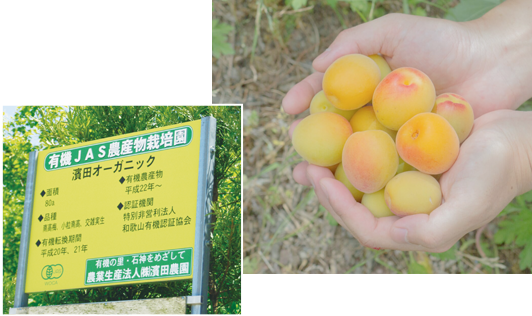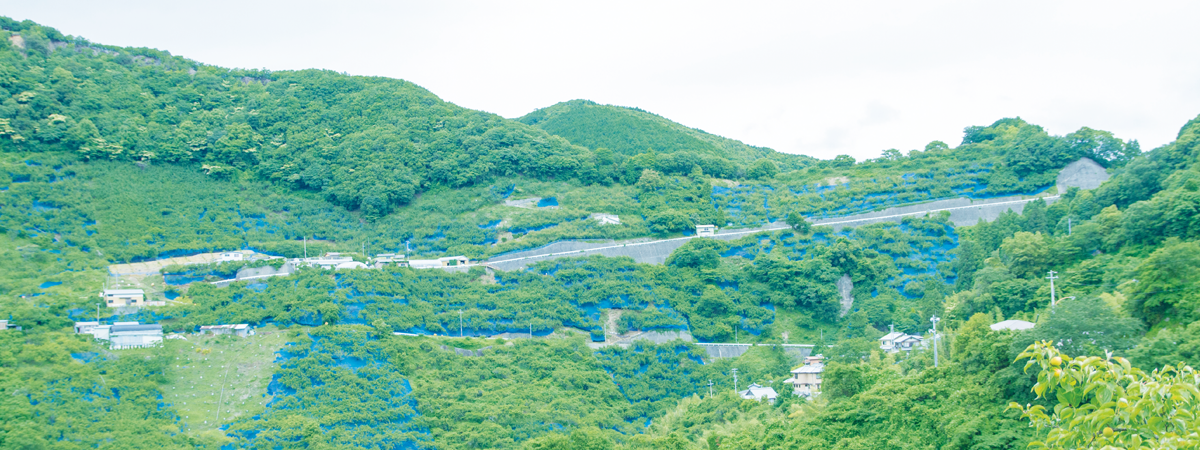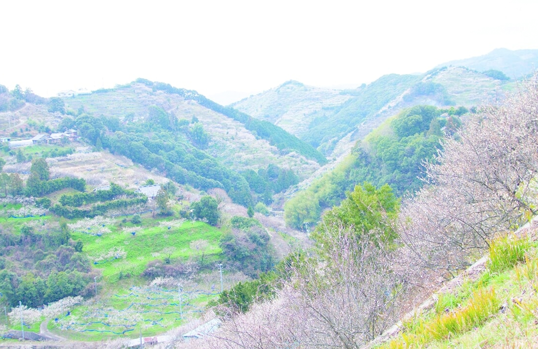Ishigami, the ume village, has been inhabited since the Edo period (1603-1868). Hamada's own farm is located here. At an elevation of 250 meters, the land is suitable for ume cultivation because of the long hours of sunlight and the wind from the Black Current (Kuroshio), which brings minerals from the sea to the land. The harshness of the natural environment, including low nutrient density of the soil and the temperature difference between day and night, are favorable conditions for ume cultivation. Furthermore, in order to efficiently cultivate high-quality fruit, we have created a flat area like a vineyard. This has enabled us to establish our own cultivation method, "Kojo Cultivation," and to easily harvest in order to make umeshu using only tree-ripened fruit. Because it’s our own farm, we can control the entire process starting with soil building, to ensure consistently high quality. Through deliberate management in this way we are able to make delicious products that we’re excited to offer to our customers.
In order to produce high quality ume, we use high-mound cultivation in which the trees are planted on a high mound of earth. This improves drainage, fertilizer breakdown, and rooting, and promotes healthy rooting to suppress disease and insect infestation and physiological disorders. We aim to achieve early maturity and stable, high quality production. Our unique Kojo Cultivation method uses half of the pesticides generally applied, and no chemical fertilizers, which surpasses the standard set by Wakayama for its Specially Cultivated Product, so we have received that certification.



In December 2015, the Minabe-Tanabe Ume System, which includes the Ishigami area and Hamada Farms, was recognized as a Globally Important Agricultural Heritage System (GIAHS). Through this system, the Food and Agriculture Organization of the United Nations (FAO) has recognized over 60 areas globally for their traditional agriculture, culture, land use, technology, as well as the biodiversity that surrounds them. The recognition of our history of sustainable production of high quality ume for over 400 years is an opportunity for us to reaffirm and promote the importance of what we have inherited.
The Tanabe area is recognized as a world-class ume production area. Its ume grove is said to have 300,000 trees visible at once. Ume viewing in the area began in 1963, when the previous president, Bujiro Hamada, opened Ishigami Village as a tourist destination. Later, in 1997, the name was changed to "Kishu Ishigami Ume Grove." Nowadays, we hold various events and visitors enjoy viewing ume’s white flowers and the aroma they produce. Ume trees flower in early February each year.
